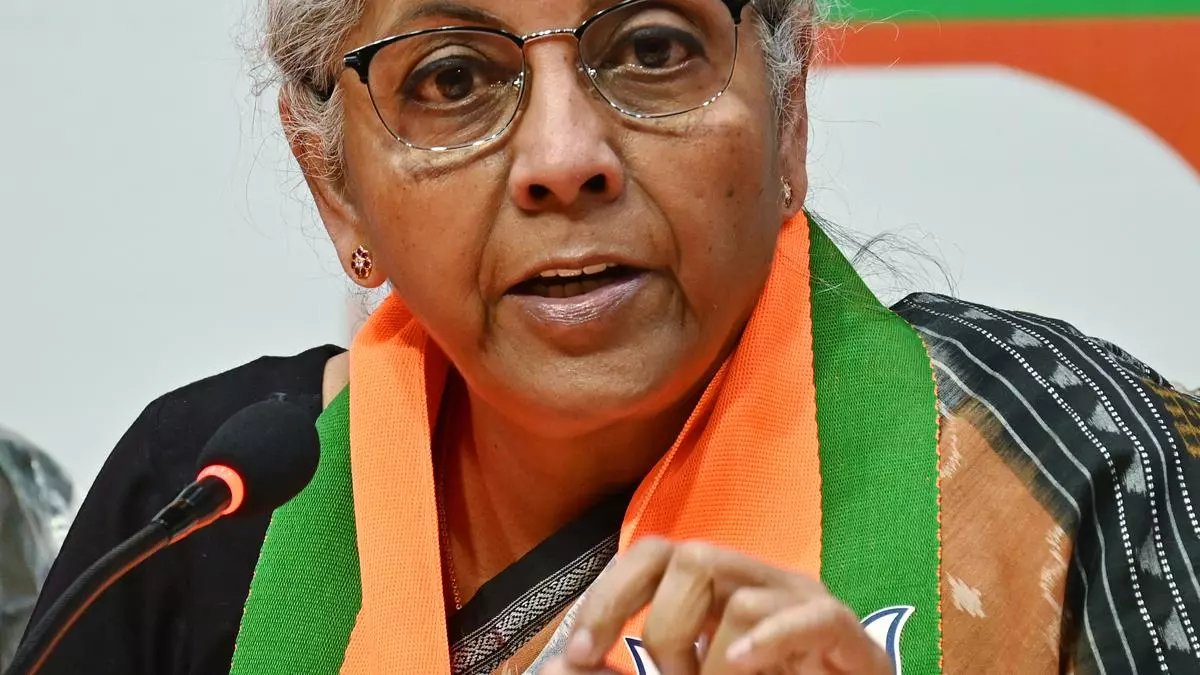Finance Minister Nirmala Sitharaman on Wednesday came down heavily on the Congress for paying ‘lip service to infrastructure’ development and wasting India’s economic growth potential during the UPA years (2004-14).
Congress’ negligence had left India among the ‘Fragile Five’ economies without focusing on effective infrastructure development, Sitharaman said in a series of posts in social platform ‘X’, formerly Twitter.
These posts — a sharp critique of the UPA Government’s policies on infrastructure — highlighted that the UPA’s term was replete with examples of decision stasis. Cost overruns, stalled projects and lack of timely approvals were common between 2004-14, Sitharaman added.
‘mismanaged’
Under UPA, almost all aspects of India’s economic needs were mismanaged or ignored, she added. While the Congress negligence left the country lagging, the Modi-led Government’s infrastructure related efforts propelled India forward with real, tangible progress on the ground, Sitharaman said.
“@INCIndia-led UPA Govt’s noticeable and deliberate neglect of infrastructure creation not only denied India much-needed roads, railways, power, etc., but it also compromised India’s long-term economic potential,” Sitharaman said.
A more glaring outcome of this neglect was the development of border roads and defence capital expenditure, which left India vulnerable to external threats, Sitharaman said.
Contrasting the ‘decision stasis’ of the UPA regime with the outperformance of the Modi-led Government, Sitharaman said that PM Modi’s active role has made the infrastructure turnaround possible.
“PM has personally monitored the progress of projects, even those launched earlier, through the PRAGATI platform. This led to the successful completion of long-delayed projects. Through 43 PRAGATI meetings, PM Modi has reviewed projects worth ₹ 17.36 lakh crore,” she said.
CAPEX SURGE
Sitharaman said that the share of Capex in total expenditure dropped sharply under the UPA. From 23 percent in 2003-04, it dropped quickly to an average of 12 percent from 2005-2014. “Imagine the opportunity cost lost due to @INCIndia not investing adequately in capital expenditure”, she said in her ‘X’ post.
Noting that Modi-led government significantly increased the outlay for capex, Sitharaman said, “As a proportion of total expenditure, Capex rose to over 21 percent in 2023-24, compared to just 12 percent in 2013-14.”
Since 2014, Modi-led government has allocated a total of ₹43.53 lakh crore in Gross Budgetary Support (GBS) capital expenditure, an increase of 3.72 times compared to 2004-14, Sitharaman said.
Under the Modi-led Govt, exponential and unprecedented infrastructure creation has happened across different sectors, Sitharaman said, elaborately detailing the progress made in Roads, Railways, Metro Rail, Aviation and Ports.
To buttress her point on the negligence of the Congress in focusing attention on infrastructure, Sitharaman pointed out that the Cabinet Secretary had noted in 2013: “Many large projects both in the public sector as well as the private sector, especially in infrastructure and manufacturing sectors, have been held up for investment on account of delays in obtaining various approvals/clearances.”
Also the IMF working paper (March 2014) highlighted 3 main reasons for the investment slowdown in India—Policy uncertainty, Delayed project approvals, implementation and supply bottlenecks.
The CAG Report 2014 highlighted that Railway Board took an average of 43 months to sanction rehabilitation of bridgeworks, and they were completed with an average delay of 41 months, she added.
Sitharaman also noted that @INCIndia has returned to their neglect of Capex and infrastructure. The 2024 Budget presented by the Congress Government in Karnataka slashed the share of capital expenditure in total spending by 28 per cent, she added.



